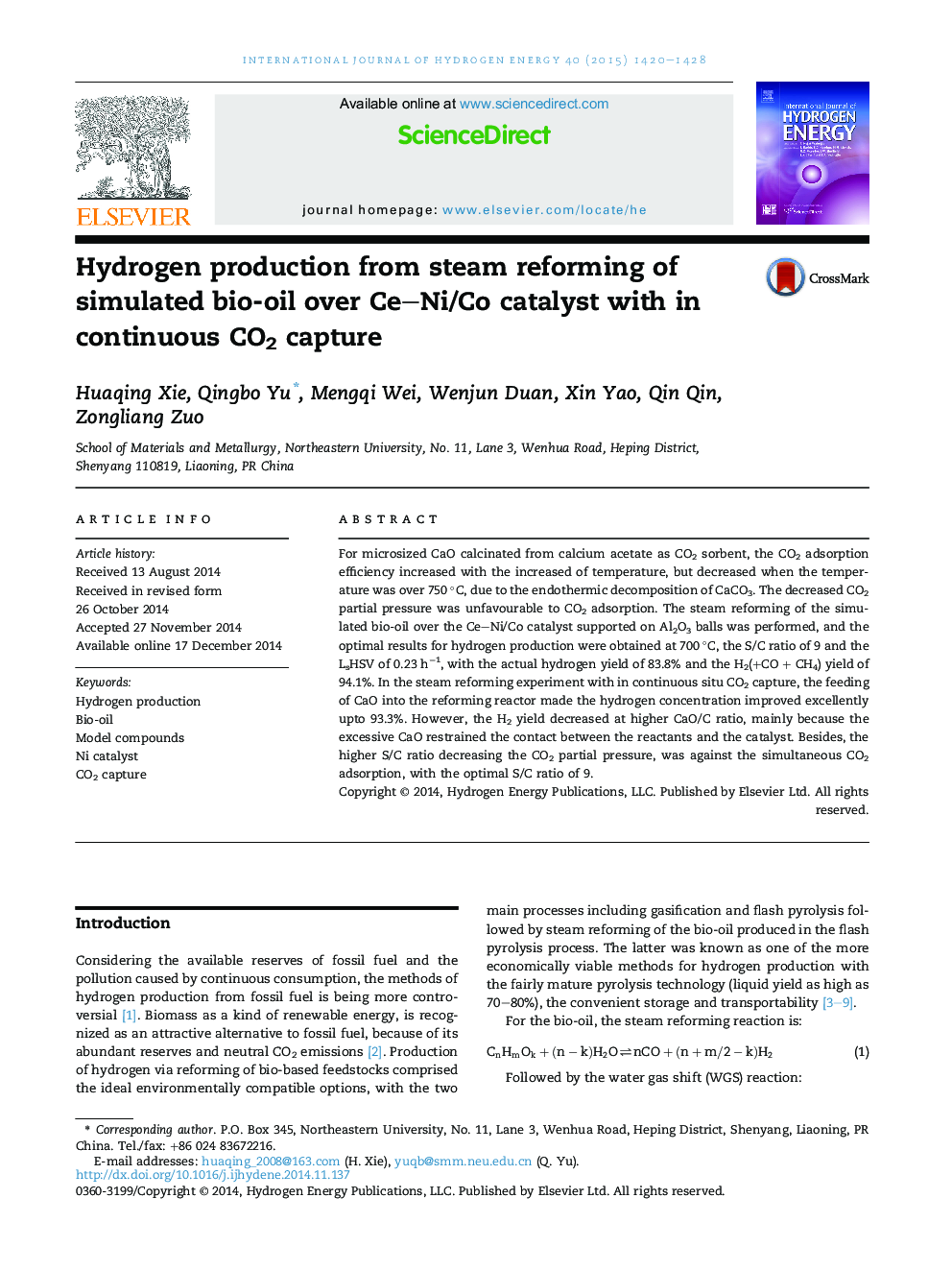| Article ID | Journal | Published Year | Pages | File Type |
|---|---|---|---|---|
| 1270130 | International Journal of Hydrogen Energy | 2015 | 9 Pages |
•The process with continuous CO2 capture needs micro sorbent, large catalyst in size.•The large-size Ce–Ni/Co catalyst showed a good catalytic performance for SR.•Hydrogen purity was dramatically improved in the SR process with in situ CO2 capture.•The optimal CaO/C and S/C ratios were obtained with continuous CO2 capture.
For microsized CaO calcinated from calcium acetate as CO2 sorbent, the CO2 adsorption efficiency increased with the increased of temperature, but decreased when the temperature was over 750 °C, due to the endothermic decomposition of CaCO3. The decreased CO2 partial pressure was unfavourable to CO2 adsorption. The steam reforming of the simulated bio-oil over the Ce–Ni/Co catalyst supported on Al2O3 balls was performed, and the optimal results for hydrogen production were obtained at 700 °C, the S/C ratio of 9 and the LsHSV of 0.23 h−1, with the actual hydrogen yield of 83.8% and the H2(+CO + CH4) yield of 94.1%. In the steam reforming experiment with in continuous situ CO2 capture, the feeding of CaO into the reforming reactor made the hydrogen concentration improved excellently upto 93.3%. However, the H2 yield decreased at higher CaO/C ratio, mainly because the excessive CaO restrained the contact between the reactants and the catalyst. Besides, the higher S/C ratio decreasing the CO2 partial pressure, was against the simultaneous CO2 adsorption, with the optimal S/C ratio of 9.
